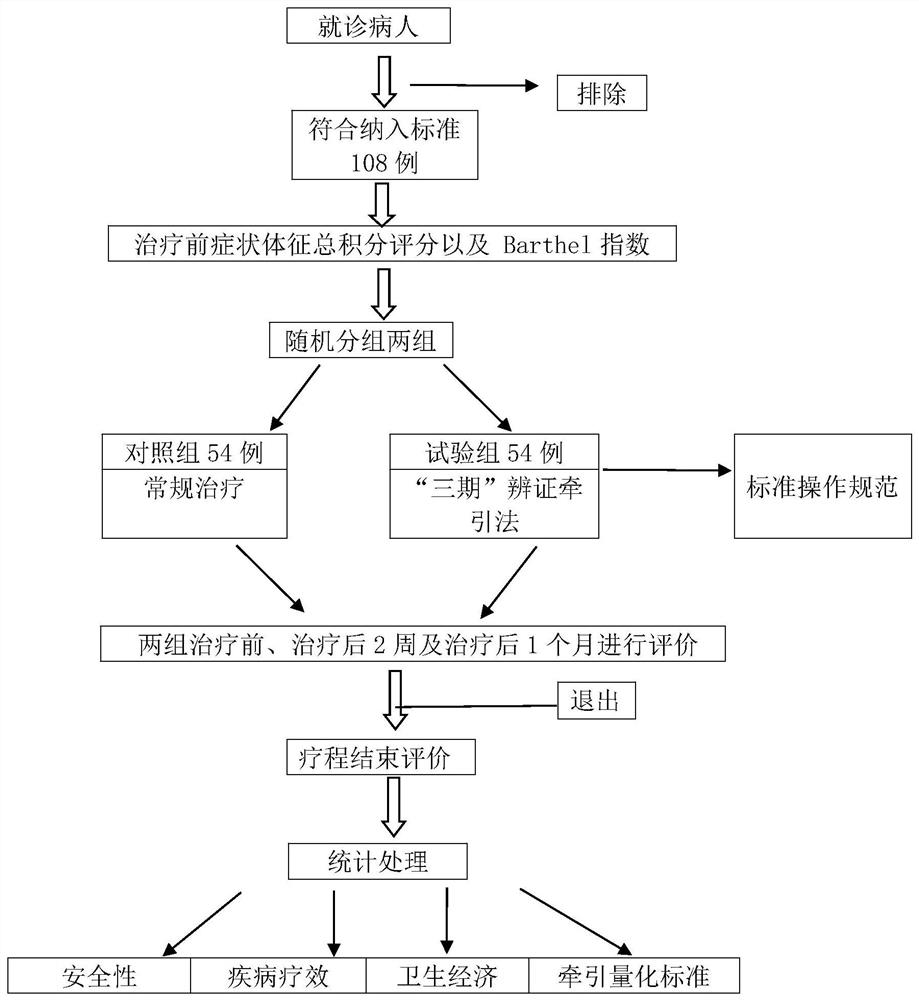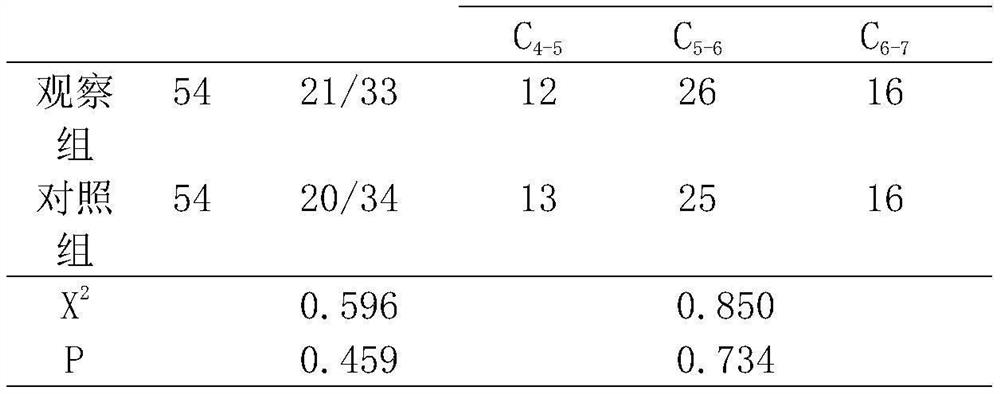Curative effect and quantification system for treating cervical spondylotic radiculopathy through three-stage syndrome differentiation traction method
A technique for radiculopathy and cervical spondylosis, which is applied in the field of the curative effect and quantification system of cervical radiculopathy, can solve the problems of poor curative effect of cervical radiculopathy, and achieves the effects of easy control, good clinical curative effect and simple operation.
- Summary
- Abstract
- Description
- Claims
- Application Information
AI Technical Summary
Problems solved by technology
Method used
Image
Examples
specific Embodiment approach 1
[0066] Specific implementation mode 1: The curative effect and quantification system of the three-stage syndrome differentiation and traction method in the treatment of cervical spondylotic radiculopathy in this implementation mode,
[0067] Relationship between abnormal cervical curvature and cervical spondylotic radiculopathy
[0068] The physiological curvature of the cervical spine is normally a smooth curve, which has the functions of maintaining the physiological functions of the cervical spine, reducing shock and protecting the spinal cord and nerve roots. With the change of work and lifestyle and the growth of age, the cervical spine is in the forward flexion and backward extension position for a long time, and the cervical intervertebral disc degenerates, causing the normal physiological curvature of the cervical spine to become straight or even arched. Wei Wei et al [45] (Wei Wei, Ye Yang, Wang Yijin. The biomechanical research and clinical significance of straighte...
specific Embodiment approach 2
[0077] Specific embodiment 2: The difference between this embodiment and specific embodiment 1 is that the data collection module is used to collect patient data, and patients who simultaneously meet the diagnostic criteria, inclusion criteria, exclusion criteria, exclusion criteria, and dropout criteria are determined as CSR patients , as the research object; the specific process is:
[0078] 11. Selection of research objects:
[0079] Collect patient data, and determine patients who meet the diagnostic criteria, inclusion criteria, exclusion criteria, exclusion criteria, and dropout criteria as CSR patients as research objects;
[0080] From October 2018 to October 2019, 108 inpatients with CSR who were admitted to the Department of Orthopedics and Traumatology, the First Affiliated Hospital of Heilongjiang University of Traditional Chinese Medicine were used as the research objects (108 cases have been identified as CSR patients, which meet the diagnostic criteria, inclusio...
specific Embodiment approach 3
[0126] Embodiment 3: The difference between this embodiment and Embodiment 1 or 2 is that the data processing module is used to group the CSR patients collected by the data acquisition module, select equipment and drugs, formulate a treatment plan, and set observation Items and evaluation indicators, setting the curative effect standard for CSR patients, and setting the statistical analysis standard; the specific process is:
[0127] 21. Grouping method: CSR patients are included in cases and randomly divided into two groups according to the control group: test group=1:1 ratio;
[0128] 22. Select equipment and drugs;
[0129] 23. Develop a treatment plan;
[0130] 24. Set observation items and evaluation indicators;
[0131] 25. Set the curative effect standard for CSR patients;
[0132] 26. Set statistical analysis standards.
[0133] Other steps and parameters are the same as those in Embodiment 1 or Embodiment 2.
PUM
 Login to View More
Login to View More Abstract
Description
Claims
Application Information
 Login to View More
Login to View More - R&D
- Intellectual Property
- Life Sciences
- Materials
- Tech Scout
- Unparalleled Data Quality
- Higher Quality Content
- 60% Fewer Hallucinations
Browse by: Latest US Patents, China's latest patents, Technical Efficacy Thesaurus, Application Domain, Technology Topic, Popular Technical Reports.
© 2025 PatSnap. All rights reserved.Legal|Privacy policy|Modern Slavery Act Transparency Statement|Sitemap|About US| Contact US: help@patsnap.com



